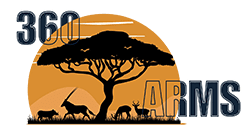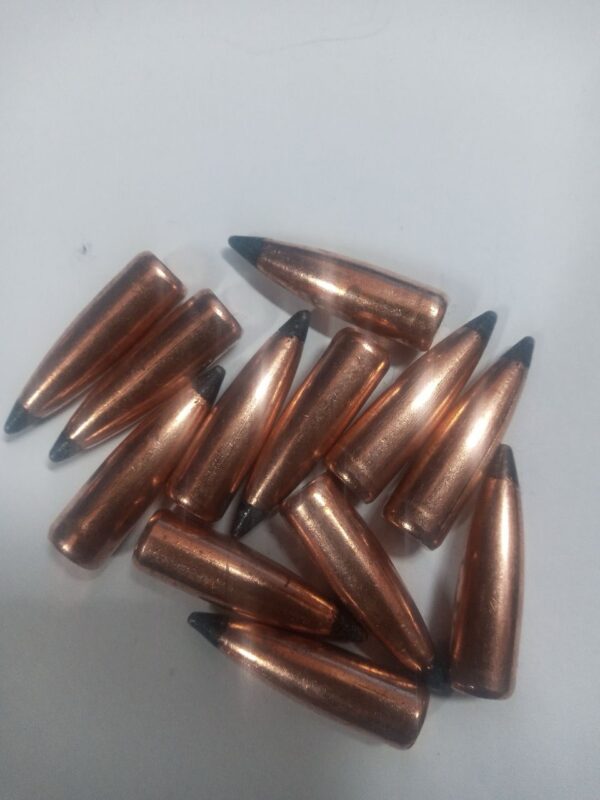How to Choose a Bullet According to Caliber, Twist Rate, and Speed: A Guide for 360arms
Selecting the correct bullet for your firearm is crucial for ensuring accuracy, performance, and reliability. This involves understanding the relationship between the bullet’s caliber, the barrel’s twist rate, and the bullet’s velocity. Additionally, choosing between monolithic bullets and lead core bullets is a key consideration. Here’s a comprehensive guide to help you make an informed decision.
Understanding Key Terms
- Caliber: The diameter of the bullet, usually measured in inches or millimeters. It must match the diameter of the firearm’s bore.
- Twist Rate: The rate at which the rifling in the barrel spins the bullet, usually expressed in inches per turn (e.g., 1:10″ means one complete turn in 10 inches).
- Velocity: The speed at which the bullet exits the barrel, typically measured in feet per second (fps).
The Importance of Bullet Stability
Bullet stability is essential for accuracy. A stable bullet follows a predictable path, while an unstable bullet can wobble, leading to inaccuracy. The stability of a bullet is determined by the gyroscopic effect created by the spin imparted by the rifling.
Determining Stability: The Greenhill Formula
One of the most commonly used formulas to determine bullet stability is the Greenhill Formula:
Twist Rate=150×D2L\text{Twist Rate} = \frac{150 \times D^2}{L}
- D is the bullet diameter in inches.
- L is the bullet length in inches.
This formula provides a rough estimate of the optimal twist rate for a given bullet diameter and length.
The Miller Stability Formula
A more modern and accurate method is the Miller Stability Formula, which considers velocity:
S=30m2⋅vt2⋅L⋅(1+L2d2)S = \frac{30 m^2 \cdot v}{t^2 \cdot L \cdot (1 + \frac{L^2}{d^2})}
- S is the stability factor (values between 1.3 and 2.0 are generally considered stable).
- m is the bullet mass in grains.
- v is the velocity in feet per second.
- t is the twist rate in calibers per turn.
- L is the bullet length in calibers.
- d is the bullet diameter in calibers.
Choosing Between Monolithic Bullets and Lead Core Bullets
Monolithic Bullets:
- Construction: Made from a single piece of metal, usually copper or a copper alloy.
- Advantages:
- Consistency: Uniform weight and shape improve accuracy.
- Penetration: Excellent for deep penetration, ideal for hunting large game.
- Environmental Impact: No lead, making them environmentally friendly and compliant with regulations in lead-free zones.
- Considerations:
- Barrel Wear: Can cause more wear on barrels compared to lead core bullets.
- Cost: Generally more expensive due to the materials and manufacturing process.
- Twist Rate: Typically require faster twist rates to stabilize due to their longer length relative to weight.
Lead Core Bullets:
- Construction: Have a lead core encased in a jacket, usually made of copper.
- Advantages:
- Variety: Wide range of designs and weights available.
- Cost: Generally more affordable than monolithic bullets.
- Performance: Proven performance across various applications, including hunting and target shooting.
- Considerations:
- Environmental Impact: Lead can be harmful to the environment and is restricted in some areas.
- Twist Rate: More forgiving in terms of twist rate requirements due to their shorter length relative to weight.
Practical Steps to Choose the Right Bullet
- Identify Your Firearm’s Caliber and Twist Rate:
- Check the manufacturer’s specifications or measure the twist rate yourself by marking the cleaning rod and seeing how far it travels in one full turn.
- Choose a Bullet Type and Weight:
- Select a bullet that suits your intended use (e.g., target shooting, hunting).
- Consider whether a monolithic or lead core bullet is better suited to your needs.
- Calculate the Stability Factor:
- Use the Miller Stability Formula to calculate the stability factor.
- Adjust the bullet weight or type if necessary to achieve a stability factor between 1.3 and 2.0.
- Consider Velocity:
- Higher velocities can help stabilize longer, heavier bullets.
- Ensure your firearm can safely achieve the required velocity.
- Test and Adjust:
- Test different bullets at the range.
- Monitor accuracy and make adjustments based on performance.
Example Calculation
Suppose you have a .308 caliber rifle with a 1:12″ twist rate, and you want to shoot a 168-grain bullet at 2700 fps.
- Caliber and Twist Rate:
- Caliber (D) = 0.308 inches
- Twist Rate (t) = 12 inches (1 turn in 12 inches)
- Bullet Length:
- Approximate length (L) = 1.2 inches (varies by bullet design)
- Calculate Stability Factor (S):
S=30×(168)2×2700(12)2×1.2×(1+(1.2)2(0.308)2)S = \frac{30 \times (168)^2 \times 2700}{(12)^2 \times 1.2 \times (1 + \frac{(1.2)^2}{(0.308)^2})}
Plugging in the values, you would determine if the bullet is stable (S between 1.3 and 2.0).
Conclusion
Choosing the right bullet for your firearm involves balancing caliber, twist rate, and velocity to achieve optimal stability. By understanding these relationships and performing the necessary calculations, you can select a bullet that will provide the best performance for your specific needs. Always test different bullets and adjust based on practical results to ensure accuracy and reliability.
Whether you opt for monolithic bullets for their consistency and environmental benefits or lead core bullets for their variety and cost-effectiveness, the key is to match the bullet to your firearm’s specifications and your shooting requirements. At 360arms, we are here to guide you through this process, ensuring you make the best choice for your shooting needs.



